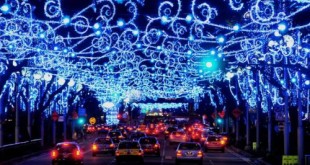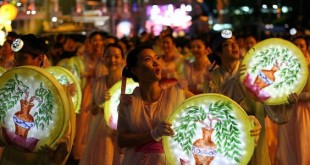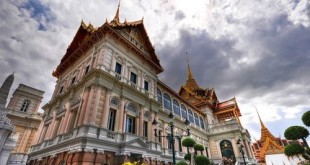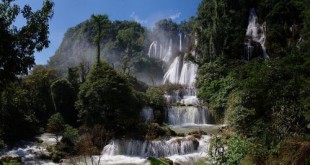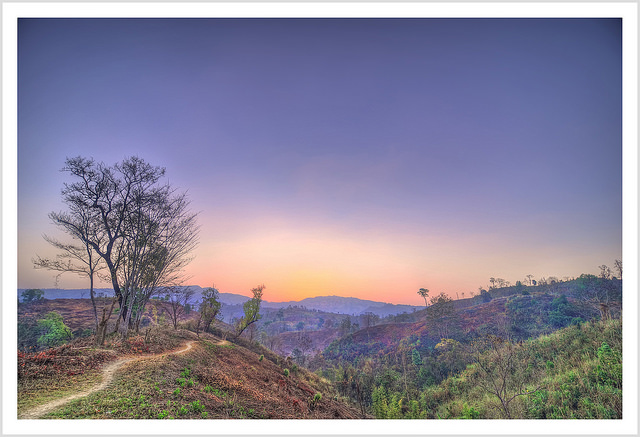In the Philippines, holidays are declared as early as a year before. Given that many of the holidays happen on the same date each year, it’s easy enough for the Filipinos to plan their vacation. The Philippines follow mostly the Gregorian calendar for the holiday planning, and many of these are based on historical events and tributes to national heroes.
The country’s holiday system is also divided into two main categories: regular holiday and special holidays (which can be working days or non working days). These are mostly national holidays, but there are a number of smaller holidays scattered about the country’s numerous regions and provinces. These may or may not be working holidays for that specific location only, such as a town or city’s foundation day, or a festival.
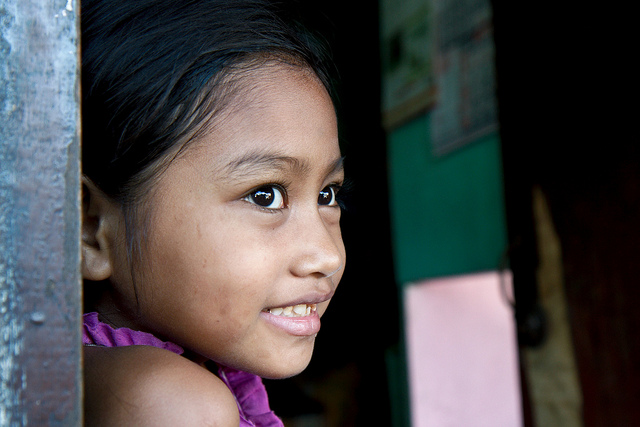
The following are the Philippine holidays for 2016. All dates, except for Holy Week, Chinese New Year, and Eid Al-Fitr occur on the same date annually.
New Year’s Day
January 1
Celebrating the new year is a big deal for Filipinos. The festivities start the day before, when families and friends get together to cook and share a delicious media noche (traditional midnight meal at the end of the previous year). A countdown to midnight also happens, and certain traditions are followed. This includes kids jumping at the stroke of midnight to grow taller, throwing coins for prosperity, making loud noises to thwart evil spirits, and turning on all lights and opening all doors to welcome good luck. Many of these traditions are influenced by how Chinese celebrate the new year.
Chinese Lunar New Year’s Day
February 8
This is the most important festival for the Filipino-Chinese community. While many of the celebrations occur in the Filipino-Chinese communities, particularly in Binondo, Manila, many establishments around the country take advantage of the holiday. Even those who don’t follow the traditional Chinese faith join in the festivities and hope that it increases their good luck. It is a good day to visit the temples or churches and offer a prayer for good fortune for the coming year.
EDSA Revolution Anniversary
February 25
This event commemorates the anniversary of the day that the country banded together to peacefully overthrow a dictator that ruled them. It is named as such because the people gathered together along the Epifanio Delos Santos Avenue (EDSA), a major thoroughfare in Metro Manila. The event brought about a major change in the government, and it also put into position the country’s first female president.
Maundy Thursday
March 24
This day marks the start of the Triduum, or the three-period that recalls the passion of Jesus Christ, up to his death, burial and ressurection. Mass is celebrated to commemorate the Last Supper, and in many churches, the priests reenact Jesus’ washing of his apostles’ feet. Catholics also observe ‘visita iglesia’, or the practice of visitng seven or more different churches.
Good Friday
March 25
This public holiday holds several different traditions for Filipino Catholics. Many commemorate Jesus’ Seven Last Words through reenactments or readings, or through a play called Senakulo. In some provinces, devotees (mostly male) would self-flagelate as an act of penance. Good Friday is also when the faithful would hold processions, center of which is the Santo Entierro: a sculpture of the dead Jesus Christ is paraded around town, followed by different saints that were mentioned in the Passion. The Virgin Mary is traditionally at the last of the procession, wearing mourning clothes. On this day, people continue the practice of abstinence.
Black Saturday
March 26
Filipinos call this day as Sabado de Gloria. It continues the previous day’s traditions, which calls for solemnity, abstinence and reflection.
Easter Sunday
March 27
It is called the Pasko ng Muling Pagkabuhay, or Christ’s Resurrection. Two separate processions, one bearing the statue of the Virgin Mary wearing a black veil for mourning, and the other of Jesus, go around town. Traditionally, women follow Mary and men follow Jesus. They meet at the galilea, from where which a girl garbed as an angel will descend from a high platform and lift up Mary’s veil to symbolize the end of her mourning. The church bells will ring and the choir sings. Mass is held following this event.
The dates for the Holy Week changes each year, ranging from mid-March at the earliest and mid-April at the latest.
Araw ng Kagitingan/Day of Valor
April 9
The Day of Valor commemorates the brave Filipino soldiers who fought during World War II. The date is fixed every year, and it is considered as a non-working holiday. Veterans of WWII attend parades and ceremonies around the country. The President of the Philippines yearly gives a commemorative speech at the Mt. Samat shrine in Bataan.
Labor Day
May 1
Just like many countries celebrating Labor Day, the Philippines honors the members of its workforce, who strive hard every day to support themselves and their families, and help improve the country’s economy.
Independence Day
June 12
This is one of most important dates in Philippine history, as it marks the country’s independence from Spanish rule in 1898. Philippine flags are displayed everywhere, and most towns have programs or parades to commemorate the day.
Eid al-Fitr
July 8
This is the first day of the Islamic month Shawwal. It is the end of the Muslim’s month-long fasting and prayer. The country recognizes this as a holiday, but the date of it changes each year as it is dependent on the coming of the new moon.
Ninoy Aquino Day
August 21
In 1983 on this day, Senator Ninoy Aquino was gunned down as he alighted from his plane at the (then) Manila International Airport. Aquino was one of the strongest opponents of then president Ferdinand Marcos. Aquino’s death sparked a rebellion among the people, which culminated in the ouster of Marcos. This event is connected to the EDSA Revolution Anniversary.
National Heroes Day
August 28, observed August 29
This holiday honors the country’s heroes, both known and unknown. It also marks the anniversary of the Cry of Pugad Lawin, which notes the start of the Philippine Revolution in 1896 as led by Andres Bonifacio.
Id ul Adha (Feast of Sacrifice)
September 13
The Feast of Sacrifice commemorates how Ibrahim (or Abraham to the Christians) willingly followed God by sacrificing his son Ishmael.
All Saints’ Day
November 1
In the Philippines, this is known as “Araw ng mga Patay” (Day of the Dead), and it is when majority of the Filipinos remember the dead. Families go to the cemeteries to clean the graves and tombstones. Flowers are brought, and many consider this day as a holiday of merrymaking and reunions.
All Souls’ Day
November 2
In the majority of the Philippines, this day is also considered as part of the Araw ng mga Patay.
Christmas Eve
December 24
Celebrations of Christmas day begins as early as the day before. December 24 also marks the last day of the Simbang Gabi tradition (early morning masses from December 16 to 24). Families get together for elaborate feasts shortly before midnight after attending Misa de Gallo, and count down to Christmas day.
Christmas Day
December 25
Christmas Day in the Philippines is marked strongly by the Catholic-Christian faith. It is the day of Jesus Christ’s birth, and the faithful commemorate it by attending mass and visitng churches. Families get together for reunions, and it is not uncommon to visit many friends during the day.
Rizal Day
December 30
This day commemorates the life, works, and achievements of Jose Rizal. He is one of the Philippines’ national heroes. On this day in 1896, he was executed at Bagumbayan.
New Year’s Eve
December 31
Filipinos make a big deal of the eve of the new year. Preparations for feasts and large gatherings are done. They wait up for midnight, and when the clock strikes, the make as much noise as possible to ward off the bad vibes of the past year.
Photo by Stefan Munder
